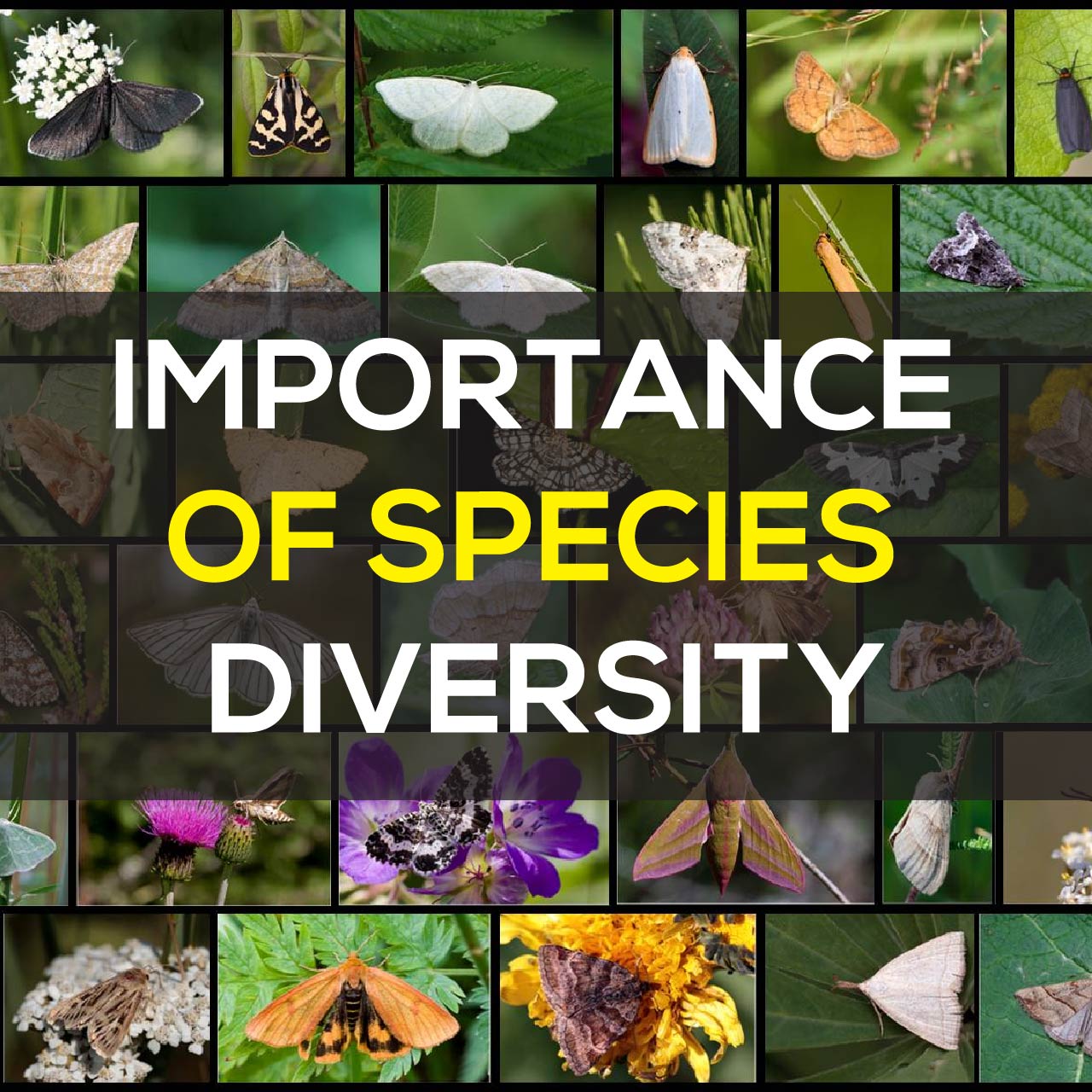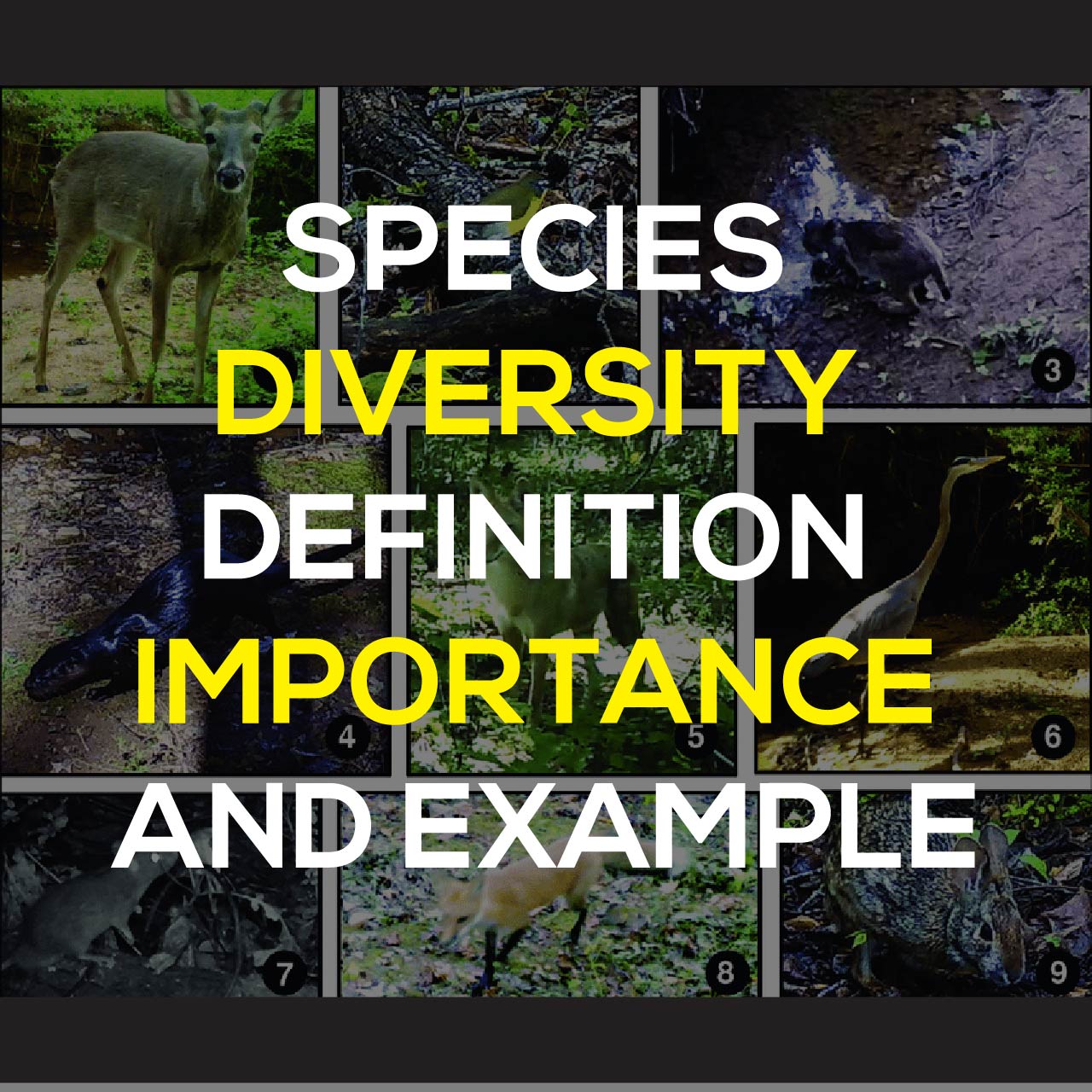Table of Contents
Species diversity is described as the number of various species present in an ecosystem and the relative abundance of all of those species. Diversity is highest when every species present are equally abundant in the field. There are 2 components of species diversity:
- Species evenness: Relative wealth of individuals of each of those species. If the number of individuals within a species is fairly constant over communities, it is said to have a high evenness and if the figure of individuals differs from species to species, it is supposed to have minimum uniformity. High evenness leads to greater species diversity.
- Species richness: Number of various species existing in an ecosystem. Torrid areas have larger species richness as the environment is conducive for a large number of species
It is likely in an ecosystem to have high species richness, but low species evenness.
For instance:
- In a forest, there may have a high number of various species (high species richness) but have only some members of each species (low species evenness)
- In a forest, there may be only some plant species (low species richness) but a huge number of each species (high species evenness)
The species diversity differs in a varied geographical area with tropics having the highest and decays as we move towards poles. The most species-rich environments are tropical rainforests, coral reefs, and ocean bottom zone.
Species richness increases with increasing explored areas.
Species Diversity of Earth
What number of species do you believe to live on Earth? There are around 1.8 million several species listed on Earth. Of whole the species are known, nearly 1 million are pests! New species are being identified each year. Specialists estimate that there may be between 5 to 30 million species that truly live on Earth. Each year, about 13,000 more species are computed to this growing list of identified species. For instance, a species of a venomous snake called the green palm-pit viper was discovered in 2013 in Honduras.
In the year 2014, a meat-eating mammal species named olinguito was found in Colombia and Ecuador. Who knows what mysterious creature might be seen this year. The hottest points for species diversity are tropical rainforests. Tropical rainforests comprise only 7 percent of all land on Earth yet are home to nearly 50 percent of all the species on Earth. In Costa Rica, there are over 1,200 species of butterflies, 1,400 species of orchids, and 600 species of birds. Fascinating species of mammals live here as well, similar to jaguars, howler monkeys, and sloths.

Importance of Species Diversity
There are various reasons why species diversity is necessary. Each species has a purpose in the ecosystem. For instance, bees are the main pollinators. Guess what would result if bees went gone. Vegetables and Fruits could be next, and consequently, the animals that feed off them – this connection links all the way to humans. Different species give us not only feed but also give to breathable air, clean water, climate stability, fertile soils, pollution absorption, building materials for our homes, inhibition of disease outbreaks, medicinal supplies, and more. Let’s see few instances.
Species diversity provides to ecosystem health. Every species is similar to a thread tying together an ecosystem. If a species vanishes, a whole ecosystem can begin to resolve. Species diversity is critical for ecosystem health. For instance, in the Pacific Northwest, salmon contains together the whole ecosystem. Salmon brings rich nutrients from the ocean back to the stream environment. When salmon expire, those nutrients are gobbled up by pests, mammals, plants, and birds. If salmon were to go, the results would be felt through the whole food chain.
Instances of the ecosystem with great Species Diversity
- Tropical Rainforests: They hold half of the world’s species. There are around 5-10 million pest species present. 40 percent of the world’s 2, 75,000 species of flowering plants are available in the tropical regions. 30 percent of whole bird species are being in tropical forests. The species richness of tropical forests is often due to nearly constant environmental conditions.
- Coral Reefs: Colonies of small coral animals build the large coral reefs ecosystem. The correctness of the water in the coral reef systems allow the sunlight to penetrate deep, ending in the high level of photosynthesis in the algae present inside the coral. Adaptation to several disturbances and niche specialization provides rise to species richness.
The Great Barrier Reef of Australia is the world’s greatest coral reef with a range of 349,000Km2. It includes approximately 1500 species of fish, 400 species of coral, 6 species of turtles, and 4000 species of mollusks,. It gives a breeding site for about 250 species of birds. It embraces only 0.1 percent of the ocean but has approximately 8 percent of the world’s fish species. There are thousands of species that are still to be identified and explained.
FAQs
[wps_faq style=”classic” question=”Q: What causes species diversity?”]A; The distribution of species in a distributed ecosystem is the result of long-lasting evolution. Every species has adapted to its individual niche, which is described by specific features (e.g. availability of food, temperature range, or light) allowing the species to reproduce and thus control its population.[/wps_faq][wps_faq style=”classic” question=”Q: What is plant species diversity?”]A; The theory of species diversity involves 2 components: species richness and evenness. The richness of Species is the number of species per unit area (geobotanical description). It is hard to assess the species diversity of areas formed by plants of unusual sizes (meadow steppe and tropical rainforest). [/wps_faq][wps_faq style=”classic” question=”Q: What is species diversity in simple words?”]A; Rigorously discoursing, species diversity is the number of various species in a particular area (species richness) weighted by some measure of abundances such as the number of individuals or biomass.[/wps_faq][wps_faq style=”classic” question=”Q: What does species evenness mean?”]A; Species evenness points to how close in amounts each species in an environment is. Mathematically it is described as a diversity ratio, a measure of biodiversity which quantifies how like the community is numerical. So if there are 1000 dogs and 40 foxes, the community is not so level.[/wps_faq]
Conclusion
Species diversity is the number of various species that are represented in a given area (a dataset). The adequate number of species points to the number of fairly abundant species required to get the same mean proportional species abundance as that remarked in the dataset of interest (where all species may not be fairly abundant).
Meanings of species diversity may combine species richness, taxonomic or phylogenetic diversity, and/or species evenness. Species richness is an easy count of species.

